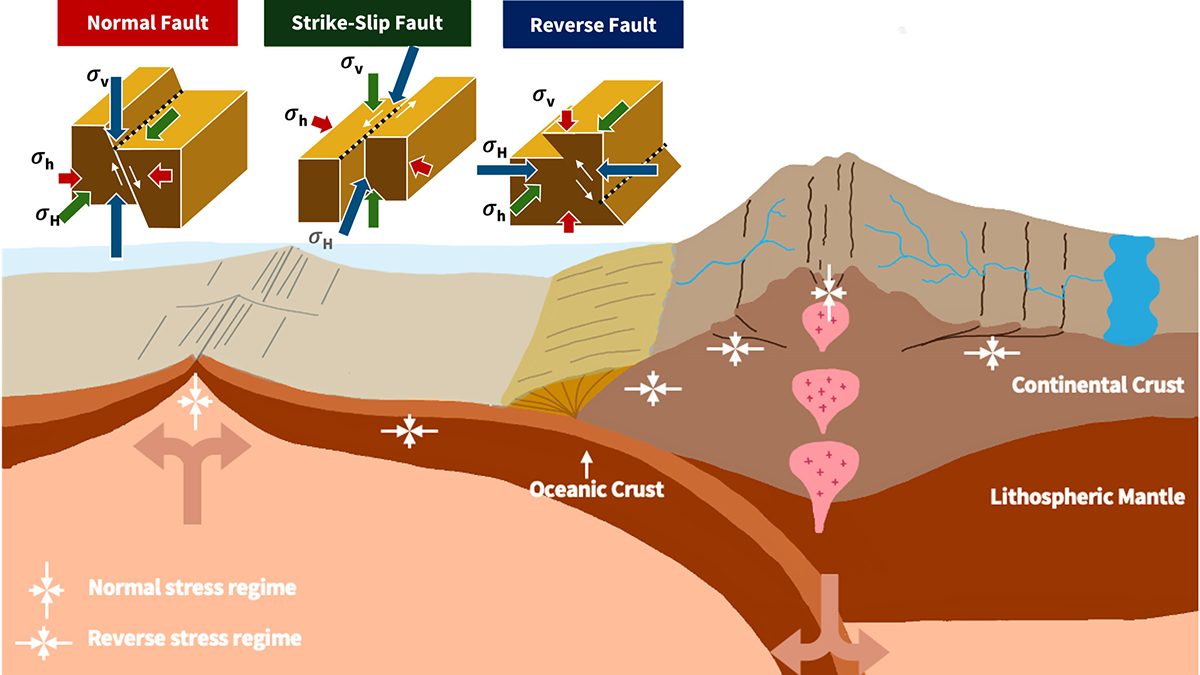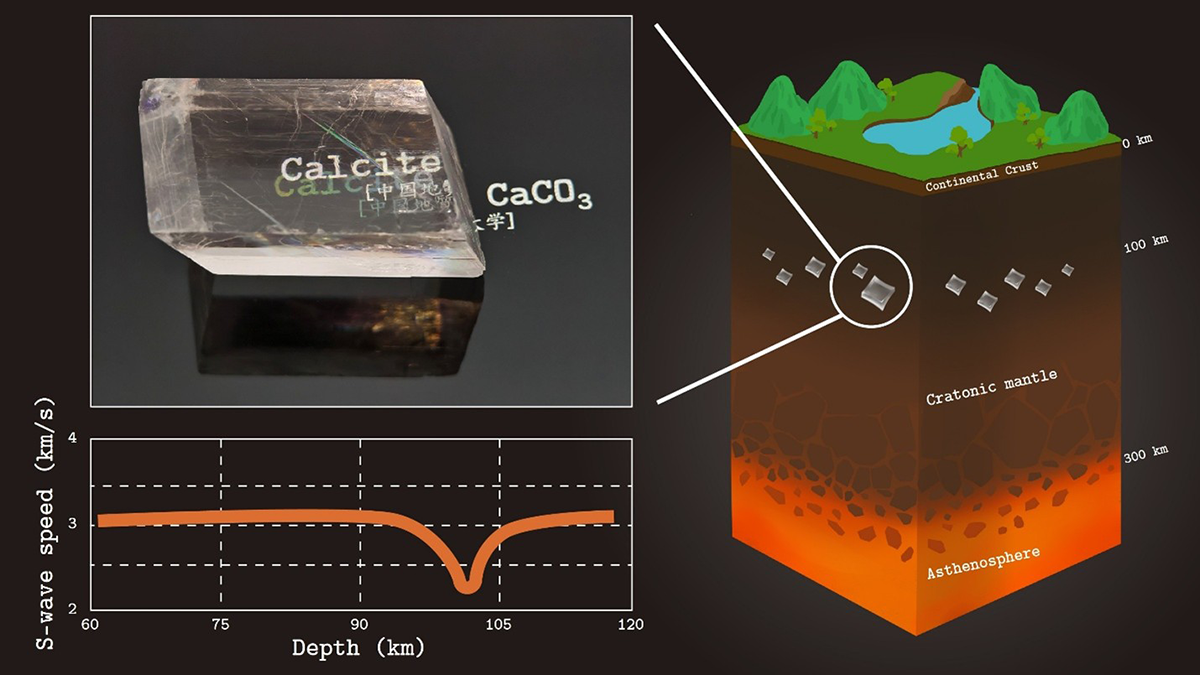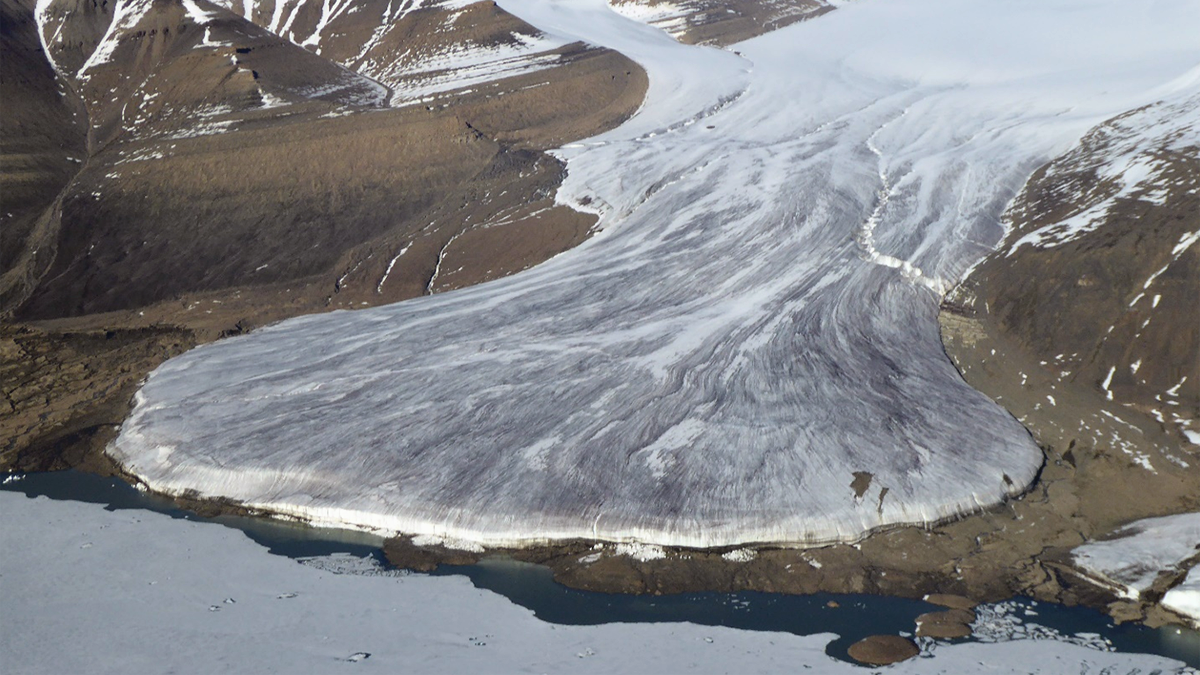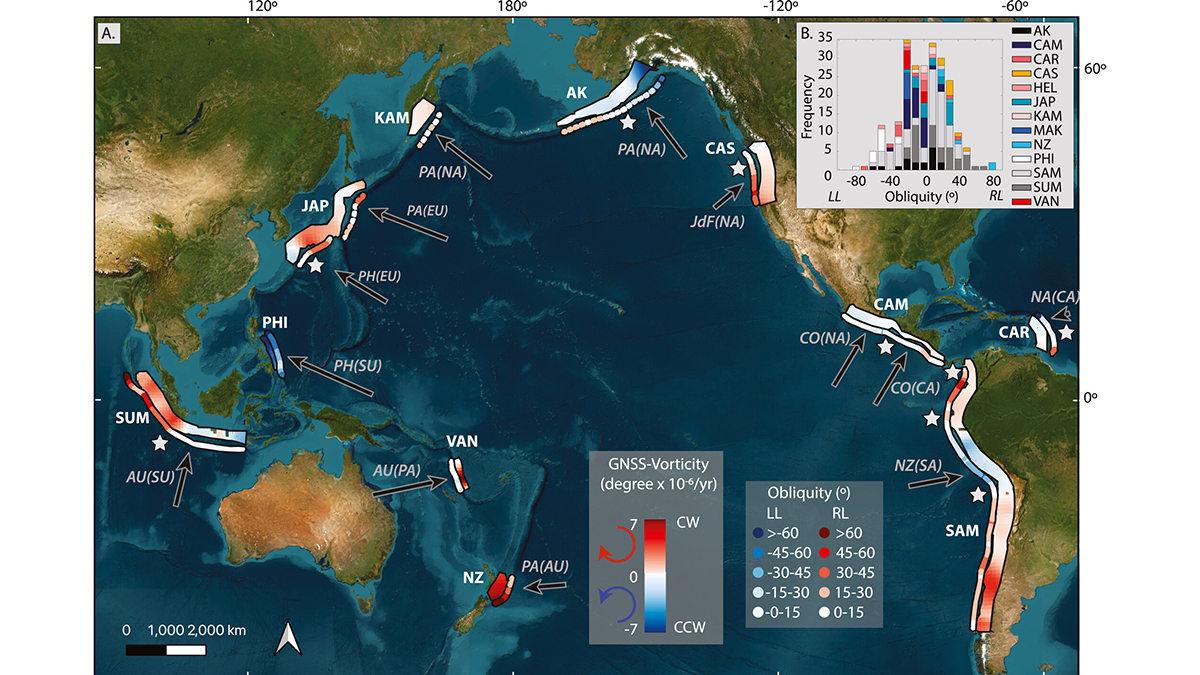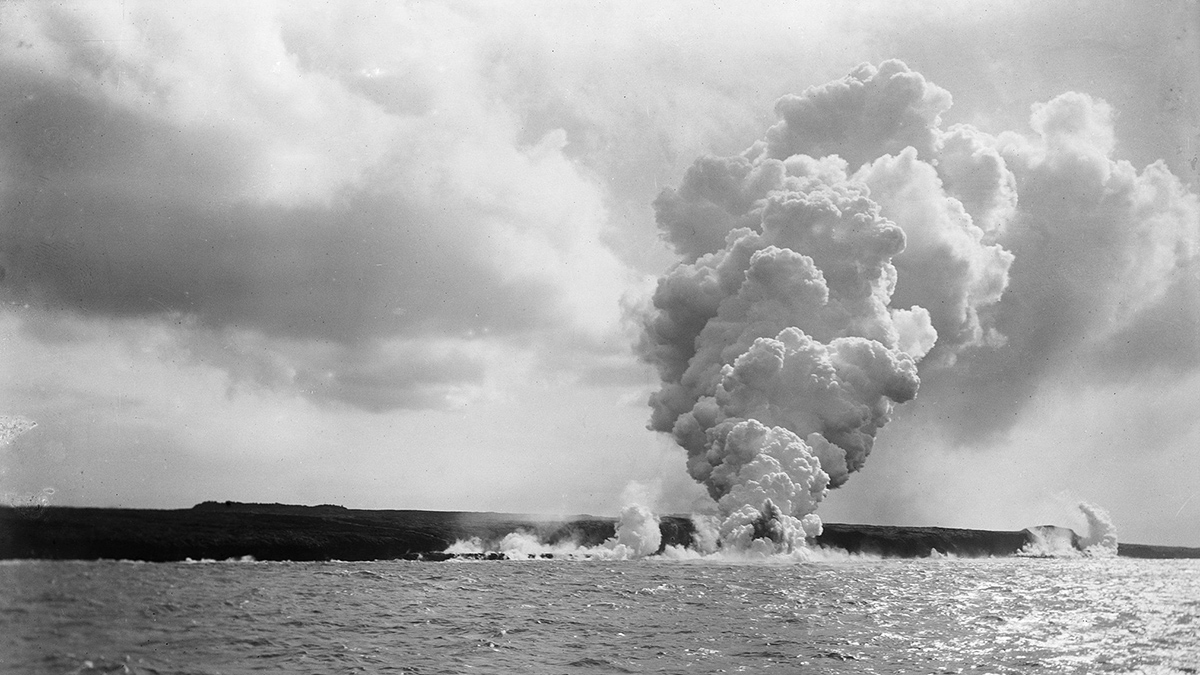The convection of the Earth’s mantle shapes its surface, carving fault networks into the lithosphere that can guide the course of rivers.
lithosphere
Unexpected Carbonate Phase Revealed by Advanced Simulations
Advanced simulations reveal a new calcium carbonate phase whose unusual elastic behavior may explain puzzling seismic and electrical anomalies beneath ancient continents.
How Glacial Forebulges Shape the Seas and Shake the Earth
A glacial forebulge is a bending-related upheaval of the lithosphere that has a strong effect on the sea level change pattern and on lithospheric stresses, which can induce intraplate earthquakes.
Skewed Subduction Shear Zones
A global reanalysis of both short- and long-term deformation clarifies how obliquity affects strain partitioning in convergent plate boundaries.
Deep Beneath California’s Sierra Nevada, Earth’s Lithosphere May Be Peeling Away
Evidence for lithospheric foundering, or the process of denser material sinking into the mantle, is emerging.
Beneath Greenland, Insights for Energy Transitions and Climate Models
Emerging consensus on the structure and dynamics of Greenland’s lithosphere may help improve forecasts of climate and sea level change and develop solutions for sustainable resource use.
How Does Subsurface Lithology Speak to Hillslope Morphology?
Subsurface flow hydrology connects soils and bedrock lithology to long-term catchment evolution in humid landscapes.
Tracking a Disappearing Mantle Plume in Ancient Samoa
A thick portion of Earth’s crust may have capped the Samoan plume and suppressed volcanism for 30 million years, explaining a curious gap along the Samoan chain.
Timing the Global Expansion on the Moon
A new analysis of the relation between randomly oriented linear gravity anomalies and two large craters on the Moon implies that the gravity anomalies formed over a long period of time.

